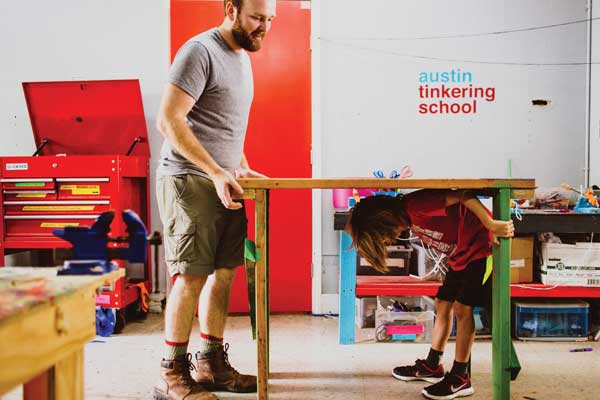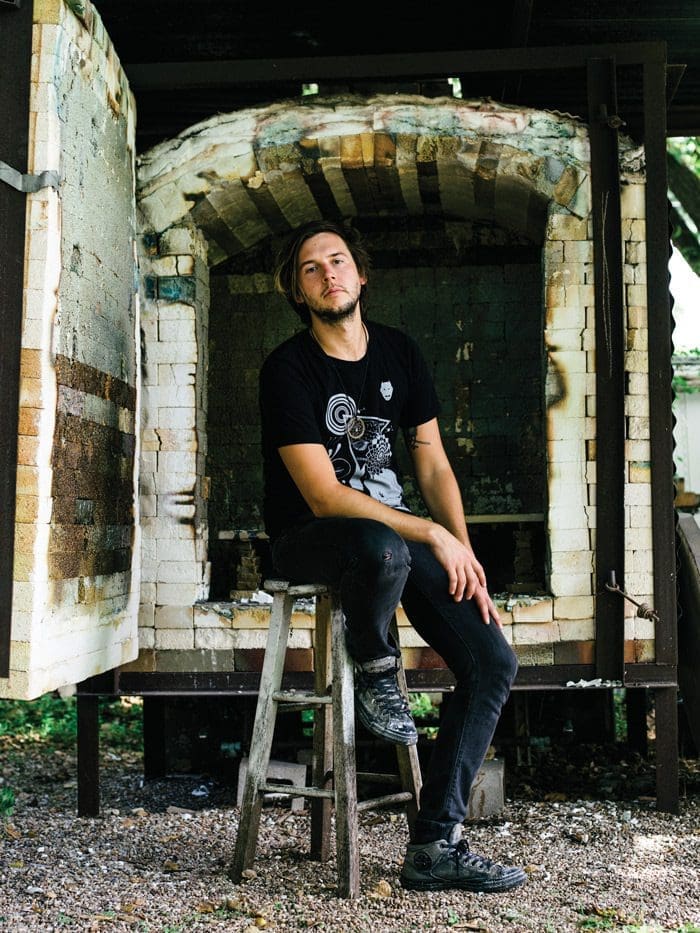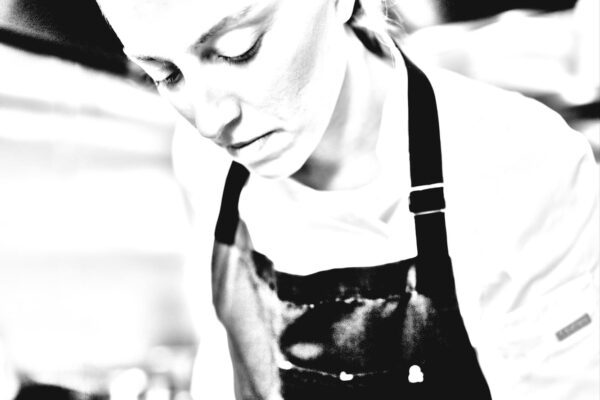Brewed to Last {Helm Boots}

Shafts of light peek through cracks between shoe boxes stacked to the ceiling at Helm Boots’ office on a balmy Monday morning. A couple hundred square feet in a nondescript warehouse in industrial East Austin serve as the company’s storeroom, design studio, and worldwide headquarters.
Words by Ben Haguewood Photos by Eric Morales
“Nobody knows about being on the road unless you’ve been in a band,” says Helm founder and former touring guitar player Joshua Bingaman sitting at a small meeting table covered in samples. He’s just returned from a visit to one of Helm’s manufacturers in Maine, and he has a trip scheduled to visit another factory in Arkansas, two of the last eight remaining American boot makers that contract to make each pair of Helm boots by hand. Getting one of these remaining eight factories to produce a custom line is not as simple as sending a design and an invoice, it’s a relationship. He jumps back up, “Anyone want a coffee? I’m having one. It’s my last vice,” Joshua confesses. That and entrepreneurship, it would seem.
Joshua moved to Austin to start a coffee roaster, which he did, pouring his life savings from a vintage sneaker shop named Subterranean Shoe Room into a dilapidated warehouse just east of I35. “I just wanted to be over here, as soon as I heard about it, don’t know why. Everyone said it was a terrible idea, but we did it anyway,” he says with pride. This is a persistent theme in each of Bingaman’s ventures. The coffee roaster he started, Progress Coffee, and its storefront sold to become what is present-day Wright Bros. Brew & Brew. Joshua took the money from that sale onto the next thing, pushing all his chips to the middle of the table again—this time with Helm Boots. “Bottom-line gets a little more complex when your heart gets involved.” Joshua pitched the idea to dozens of investors, but those seeking only return on investment begged off. Music, coffee, and footwear seem like an unlikely pattern to anyone but Joshua. “People, product, profit. In that order,” he says.
It’s fair to say Joshua has built Helm from the ground up—but from the inside out is more accurate. The last—or shoe mold around which the boot is built—is the form and essence of the boot. It’s the first thing that determines the depth and narrowness of the toe-box, heel—everything really that distinguishes one type of shoe from another and makes it look more formal, casual, utilitarian, or otherwise unique. Joshua has become something of a last expert. “Last designs are actually intellectual property, and when the patents expire, they become public domain,” he notes. Joshua has collected, examined, studied, and otherwise obsessed over lasts, from golf shoes, derby shoes, bowling shoes, and more. “In Italy, they use concrete lasts, isn’t that wild?” he adds. Now Helm has begun to produce some of its boots on lasts Joshua designed.
With no formal design training, Joshua just goes by feel. He holds up a tan suede sample that slightly resembles the classic Frye campus boot and adds, “I just knew it didn’t look right, too much of a boot boot.” Joshua sent it back, same material, but different last. The narrower, sleeker finished product would become the Riley, a shorter more refined version with a side zip, more akin to a Chelsea boot—sort of Brit-pop meets Merle Haggard.
Moving from one sample to the next is a company history, Joshua tossing each one into a pile. “The sole of this shoe is based on a paratrooper boot…this design came from a prison boot.” Each one has a story and a name. Helm’s boots go by a given name, but it’s not just something to make people identify with it—they’re his ‘people.’ The company name, in fact, bears the same as his first son, and the name of one of Joshua’s longest and closest friends, “Let’s just say he’s pulled me back from the brink more than one time.”
Helm boots are made by the same small boot manufacturers that produce the oldest American brands, but Helm is not “heritage,” not even close. The designs are fresh, and in the middle room of the East Austin office, they’re looking two years out with material, texture, color, and style, which has caused hiccups with traditional bootmakers—but that hasn’t slowed them down. The stacked sole, prominent on several Helm standards, has a layer of leather, rubber, and leather. The producer balked at the idea of sewing them all together, to which Joshua shrugged, “I just said try it. And they did. And it worked.”
Contact:
helmboots.com
HELMBoots










